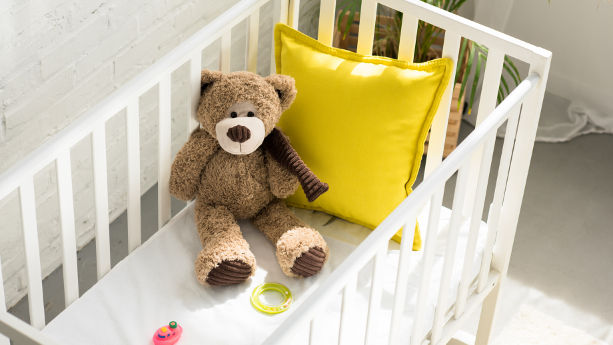
The Consumer Product Safety Improvement Act (CPSIA) regulates products that are intended for children aged 12 and younger. The requirements of the CPSIA apply to various categories of children’s products, including toys and durable infant or toddler products, such as play yards and high chairs.
This guide provides examples of children’s products covered by the CPSIA and examples of safety rules and standards related to each product category. Note, however, that the CPSIA regulates all products that are intended for children, not only the products that are listed in this guide or for which there exists a specific safety rule.
Methodology
1. This guide lists products regulated by existing children’s product safety rules “requiring third-party testing and a children’s product certificate”, as listed on the CPSC’s relevant guidance document. It also lists children’s footwear, jewelry, and school and stationery items, even though we could not find any specific safety rules for these products listed in the guidance document.
2. Besides listing products, each section of this guide lists the safety rules that we could find that apply to the mentioned product categories. Note that:
a. Other relevant safety rules and standards may exist, besides the ones listed in this guide
b. Some rules apply to many different types of products, such as 16 CFR part 1501, which covers small parts.
c. Some rules cover substance restrictions (e.g., lead or phthalates). As such, they are relevant for many product categories. We found the following three:
- 16 CFR Part 1303 – Ban of Lead-Containing Paint and Certain Consumer Products Bearing Lead-Containing Paint
- 16 CFR Part 1307 – Prohibition of Children’s Toys and Child Care Articles Containing Specified Phthalates
- 15 U.S.C. § 1278a – Children’s products containing lead; lead paint rule
d. Besides listing all the safety rules provided in the CPSC’s guidance document, this guide also lists some additional safety rules and standards, such as 16 CFR Part 1120 and ASTM F2412.
e. Some of the listed products are deemed to be durable infant or toddler products, for which additional requirements apply. In this case, we mention this information in the guide.
Content Overview

FREE CONSULTATION CALL (US, EU & UK)
- Request a free 30-minute call with Ivan Malloci to learn how we can help you with:
- Find product requirements
- Certification and labeling
- Lab testing
Toys
CPSIA compliance is mandatory for toy products that are intended for use by children aged 12 years and under because unsafe toys may injure children and result in choking, burns, or poisoning, for example. As such, toys must comply with relevant ASTM safety standards and other requirements.
Examples
The CPSIA sets safety requirements for toys, such as:
- Plastic toys
- Soft toys
- Toy vehicles
- Rattles
- Toy firearms
Safety rules
Here are examples of safety rules for toys:
a. 16 CFR Part 1250 – Safety Standard Mandating ASTM F963 For Toys
b. 16 CFR part 1505 – Requirements for Electrically Operated Toys or Other Electrically Operated Articles Intended for Use by Children
c. 16 CFR Part 1272 – Marking of Toy, Look-Alike, and Imitation Firearms
d. 16 CFR Part 1510 – Requirements for Rattles
e. 16 CFR § 1500.86(a)(5) – Clacker balls
Children’s Clothing & Babywear
CPSIA lays down safety requirements for children’s clothing and babywear, as these products may be dangerous for children. For instance, children may unintentionally strangle themselves with hoods or drawstrings found in children’s clothing.
Also, children may choke due to the ingestion of loose buttons or get burned if their clothes catch fire. Finally, there are specific requirements for children’s clothing with strings.
Examples
Here are some examples of children’s clothing and babywear products:
- Children’s sleepwear
- Children’s outerwear
- Diapers and underwear
- Infant garments
- Tight-fitting garments
Safety rules
Here are some examples of safety rules relevant to children’s clothing:
a. 16 CFR Part 1120 – Substantial Product Hazard List, which incorporates by reference ASTM F1816–97 Standard Safety Specification for Drawstrings on Children’s Upper Outerwear
b. 16 CFR Part 1610 – Standard for the Flammability of Clothing Textiles
c. 16 CFR Part 1611 – Standard for the Flammability of Vinyl Plastic Film
d. 16 CFR Part 1615 – Standard for the Flammability of Children’s Sleepwear: Sizes 0 Through 6X (FF 3–71)
e. 16 CFR Part 1616 – Standard for the Flammability of Children’s Sleepwear: Sizes 7 Through 14 (FF 5–74)
Children’s Footwear
Children’s footwear materials or chemical components may pose a danger to children due to an excessive amount of dangerous substances (e.g., lead, phthalates), or unsafe design (e.g., slippery sole). As such, children’s footwear should comply with relevant rules and standards.
Examples
Here are some examples of children’s footwear:
- Children sandals
- Children sneakers
- Children sports shoes
Safety rules
Although we were not able to find specific CPSC safety rules for children’s footwear, there are footwear standards that you can use to improve the safety of your footwear products, such as the following:
a. ASTM F2412 – Standard Test Methods for Foot Protection
b. ASTM F2892 – Standard Specification for Performance Requirements for Soft Toe Protective Footwear (Non-Safety / Non-Protective Toe)
Children’s Jewelry
Children’s jewelry may be dangerous because its skin-contact materials may contain hazardous substances, and they present choking hazards or strangulation hazards (e.g., in the case of long necklaces). For this reason, manufacturers of children’s jewelry must ensure their products’ compliance with substance restrictions and other requirements.
Examples
Here are several examples of children’s jewelry:
- Children necklaces
- Children rings
- Children bracelets
- Children earrings
Safety rules
According to our research, there are no CPSC safety rules or incorporated safety standards specific to children’s jewelry. However, it is critical to comply with rules that limit dangerous substances and follow the requirements of standards such as ASTM F2923 – Standard Specification for Consumer Product Safety for Children’s Jewelry
Children’s Furniture
Children’s furniture may pose hazards, especially to young children. For instance, clothing storage units may tip over and fatally injure children, bunk beds may result in trapped children, and wooden stools may have splinters, causing harm.
Examples
Here are some examples of children’s furniture:
- Bassinets and cradles
- Cribs (full-size and non-full-size)
- Toddler bed
- Children’s folding chairs
- Clothing storage units
Note that all the products listed above, excluding clothing storage units, are classified as durable infant products, for which there exist additional requirements, as already explained.
Safety rules
We found the following safety rules that cover children’s furniture:
a. 16 CFR Part 1231 – Safety Standard for High Chairs
b. 16 CFR Part 1513 – Requirements for Bunk Beds
c. 16 CFR Part 1232 – Safety Standard for Children’s Folding Chairs and Children’s Folding Stools
d. 16 CFR Part 1261 – Safety Standard For Clothing Storage Units
e. 16 CFR Part 1217 – Safety Standard for Toddler Beds
f. 16 CFR Part 1224 – Safety Standard for Portable Bed Rails
Mattresses
Mattresses may pose hazards to children, such as flammability, suffocation due to “overly soft mattresses”, potential entrapment due to poor fits, and injuries due to exposed coil springs.
Several rules exist to address these issues and ensure the safety of these products.
Examples
Here are several examples of mattresses covered by the CPSIA:
- Children’s mattresses
- Children’s mattress pads
- Children’s mattress sets
- Crib mattresses
Note that crib mattresses are classified as durable infant or toddler products.
Safety rules
Here are several mattress-related safety rules:
a. 16 CFR Part 1241 – Safety Standard for Crib Mattresses, which incorporates by reference ASTM F2933 – Standard Consumer Safety Specification for Crib Mattresses
b. 16 CFR Part 1632 – Standard for the Flammability of Mattresses and Mattress Pads
c. 16 CFR Part 1633 – Standard for the Flammability (Open Flame) of Mattress Sets
Bicycles and Bicycle Helmets
The CPSIA lays down safety requirements for bicycles and bicycle helmets intended for children. These products may be dangerous as they may contain harmful substances (e.g., lead), sharp edges, or other dangerous characteristics.
Thus, manufacturers of such products should ensure that said products comply with relevant requirements.
Examples
Here are several bicycle-related products that children may use:
- Sidewalk bicycles
- Recumbent bicycles
- Bicycle helmets
Safety rules
Here are somesafety rules for bicycles and helmets:
a. 16 CFR Part 1512 – Requirements for Bicycles
b. 16 CFR Part 1203 – Safety Standard for Bicycle Helmets, which incorporates by reference several ASTM standards
Infant Cribs and Bassinets
The CPSIA covers cribs and bassinets for babies, and defines them as durable infant or toddler products. While the CPSC states that cribs and bassinets are beds that accommodate sleeping infants, bassinets may have wheeled or rocking bases.
Infant cribs and bassinets may be dangerous as they may have sharp points, and their components may, for instance, contain small parts and excess lead. As such, you should test your products against relevant requirements to ensure they are safe to use.
Examples
Here are several examples of crib and bassinet products:
- Children’s cribs (Full-size)
- Children’s cribs (Non-full-size)
- Children’s travel cribs
- Children’s portable bassinets
Safety rules
Here are several safety rules that are relevant for cribs and bassinets and incorporate ASTM standards by reference:
a. 16 CFR Part 1218 – Safety Standard for Bassinets and Cradles
b. 16 CFR Part 1219 – Safety Standard for Full-Size Baby Cribs
Infant Strollers and Carriages
The CPSIA establishes safety requirements for the manufacture of strollers and carriages. While carriages are intended for infants and strollers are meant for use by children and infants aged 3 and under, the CPSC considers both to be durable infant or toddler products.
Additional safety requirements may apply to strollers and carriages to minimize the risk of deaths and injuries associated with product usage.
Strollers and carriages are also subject to durable infant or toddler product requirements.
Safety rules
16 CFR Part 1227 – Safety Standard for Carriages and Strollers
Note that the standard incorporates by reference ASTM F833 – Standard Consumer Safety Performance Specification for Carriages and Strollers
Baby Carriers
Baby carriers are also classified as durable infant or toddler products. They may be dangerous because they may have exposed components and sharp points, and contain flammable components, for example. You should get your product tested against relevant requirements to ensure it is safe for use (e.g. no sharp points).
Examples
Here are some examples of baby carriers:
- Frame child carriers
- Hand-held infant carriers
- Sling carriers
- Soft infant and toddler carriers
Safety rules
We found four safety standards that are relevant to baby carriers:
a. 16 CFR Part 1230 – Safety Standard for Frame Child Carriers
b. 16 CFR Part 1225 – Safety Standard for Hand-Held Infant Carriers
c. 16 CFR Part 1228 – Safety Standard for Sling Carriers
d. 16 CFR Part 1226 – Safety Standard for Soft Infant and Toddler Carriers
Pacifiers
Pacifiers may be dangerous as a child may place the entire product in the mouth and consequently choke or suffocate on it. The product may also potentially break under abuse, resulting in a possible small-parts choking hazard.
Further, according to the CPSC website, you should not sell a pacifier with attachments such as strings, cords, or ribbons because they may pose strangulation hazards.
Examples
Here are some examples of pacifiers and related products:
- Infant’s pacifiers
- Infant’s pacifier clips
- Infant’s pacifiers with rubber nipples
- Toy pacifiers
Safety rules
Safety rules and standards that cover pacifiers, pacifier clips, and relevant products include:
a. 16 CFR Part 1511 – Requirements for Pacifiers
b. ASTM F963 – Standard Consumer Safety Specification for Toy Safety
School and Stationery Items
Stationery items such as pencils or crayons should not contain excessively hazardous substances such as lead, nickel, and mercury. Also, children may be vulnerable to laceration hazards resulting from the use of pencils or other stationery items with sharp edges.
Examples
- Pens and pencils
- Highlighters and markers
- Crayons and paints
- Papers and notebooks
- Scissors and staplers
Safety rules
The Labeling of Hazardous Art Materials Act (LHAMA) covers several school-related and stationery products. It also deems the following standard to be a regulation issued by the CPSC:
ASTM D4236 – Standard Practice for Labeling Art Materials for Chronic Health Hazards
Other standards may also apply to some types of stationary items, such as:
ASTM F963 – Standard Consumer Safety Specification for Toy Safety
Carpets
The CPSC sets safety requirements for carpets and rugs. There are separate requirements for small carpets and rugs. While 16 CFR Part 1630 defines a “carpet” as having a surface area greater than 24 square feet, 16 CFR Part 1631 defines a “small carpet” as having a surface area less than 24 square feet.
According to the CPSC, baby play mats may meet the definitions of “carpet” or “small carpet”, and as such, may be subject to the requirements of either 16 CFR Part 1630 or 16 CFR Part 1631.
Generally, you should ensure that your carpets are safe by testing them against flammability and substance requirements. Carpets that catch fire easily or contain dangerous substances are hazardous to children and households.
Examples
Covered products include:
- Carpets
- Small carpets
- Rugs
- Small rugs
Safety rules
We found two safety rules for carpets and rugs:
a. 16 CFR Part 1630 – Standard for the Surface Flammability of Carpets and Rugs (FF 1-70)
b. 16 CFR Part 1631 – Standard for the Surface Flammability of Small Carpets and Rugs (FF 2-70)
Other infant products
This section covers infant products that are not already covered by previous sections. These products could be dangerous due to several causes, such as the following:
- Small parts
- Lead in paint
- Hazardous sharp edges and points
- Latching or locking mechanisms
- Exposed components (e.g., coil springs)
As such, you should get your infant products tested to ensure they are safe for infants to use.
Examples
Here are some examples of products:
- Infant bath seats
- Infant bath tubs
- Infant bouncer seats
- Infant sleep products
- Infant support cushions
- Infant swings
- Infant walkers
Note that all these products are durable infant or toddler products.
Safety rules
The products listed above are subject to the requirements of their respective safety standards:
a. 16 CFR Part 1215 – Safety Standard for Infant Bath Seats
b. 16 CFR Part 1234 – Safety Standard for Infant Bath Tubs
c. 16 CFR Part 1229 – Safety Standard for Infant Bouncer Seats
d. 16 CFR Part 1236 – Safety Standard for Infant Sleep Products
e. 16 CFR part 1243 – Safety Standard for Infant Support Cushions
f. 16 CFR Part 1223 – Safety Standard for Infant and Cradle Swings
g. 16 CFR Part 1216 – Safety Standard for Infant Walkers
Other products
This section lists children’s products found on the CPSC page “Rules Requiring Third-Party Testing and a Children’s Product Certificate” that are not mentioned in the above sections.
| Product category | Relevant safety rules | Durable infant product? |
| All-terrain vehicles | 16 CFR Part 1420 | No |
| Baby changing products | 16 CFR Part 1235 | Yes |
| Bedside sleepers | 16 CFR Part 1222 | Yes |
| Booster seats | 16 CFR Part 1237 | Yes |
| Button cell or coin battery packages | 16 CFR Part 1263 15 U.S.C. § 2056e |
No |
| Dive sticks and other similar articles | 16 CFR Part 1500.86(a)(7) or (8) | No |
| Gates and enclosures | 16 CFR Part 1239 | Yes |
| Magnets | 16 CFR Part 1262 | No |
| Nursing pillows | 16 CFR part 1242 | Yes |
| Play yards | 16 CFR Part 1221 | Yes |
| Portable hook-on chairs | 16 CFR Part 1233 | Yes |
| Stationary activity centers | 16 CFR Part 1238 | Yes |


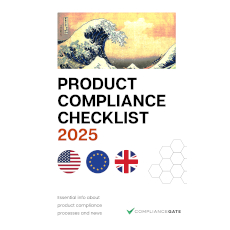
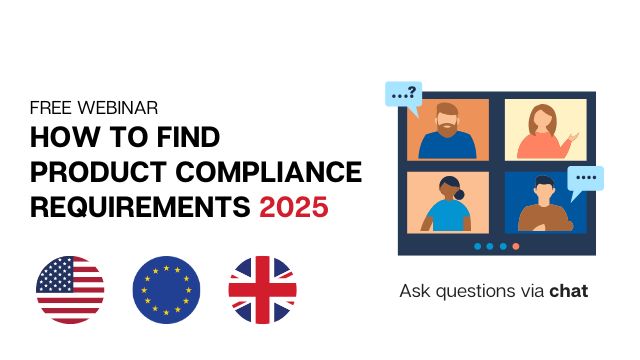
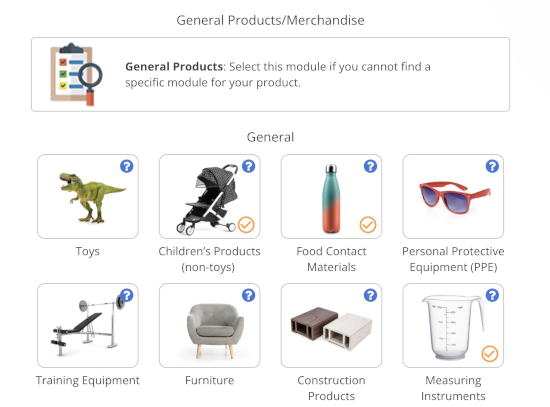

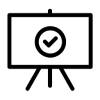
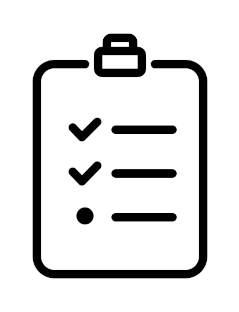
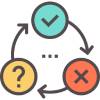


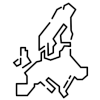

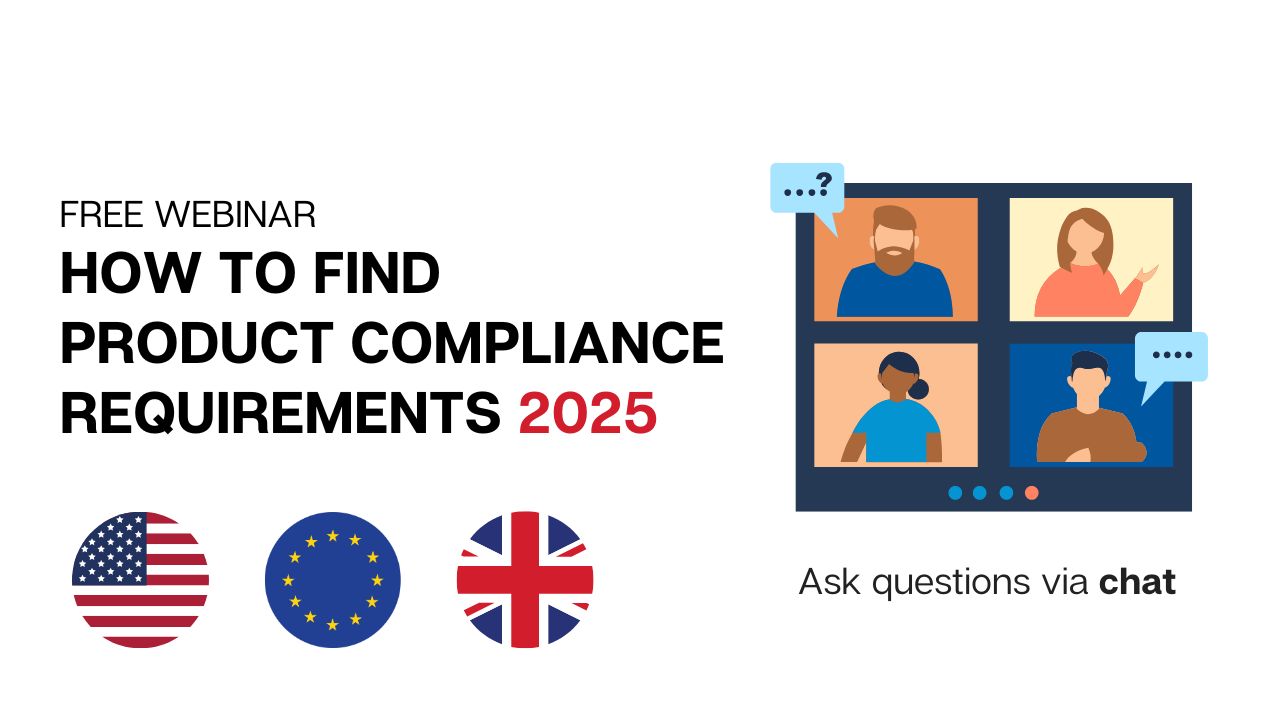

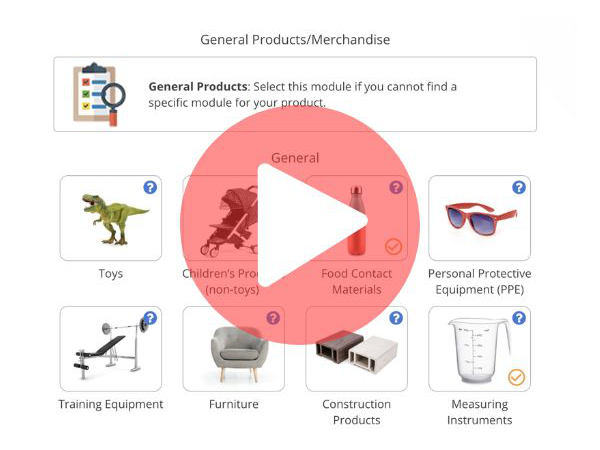
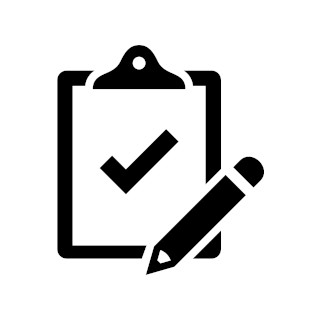 Create compliance checklists for your product (US, EU & UK)
Create compliance checklists for your product (US, EU & UK)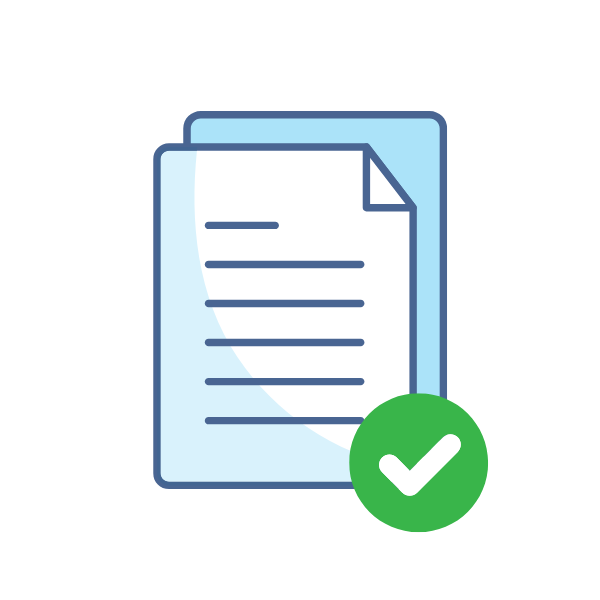 20+ product certificate templates
20+ product certificate templates Create label files
Create label files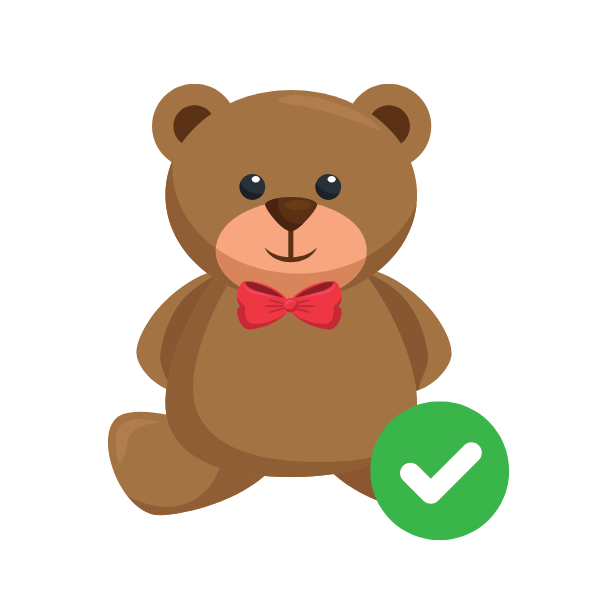 Book product testing
Book product testing
Hello, I selected a bed frame over others because it was marked as “CPSIA compliant.” When it arrived, it had a sticker on the back that says “Warning! Cancer and Reproductive Harm!” -www.P65Warnings.ca.gov. I thought I was buying something safe but now am worried. Can you shed any light on this? Thank you so much!
Hi
Thanks for such a precious information.
I want to sell baby highchair in US market through Amazon platform. In addition to the CPSIA and CPC certificate, Amazon requires a registration card from me, and the lab also needs to start testing that card. I want to know about it. Is it to register my product somewhere or just to enter information on the template form. If yes, what is its cost and how and where to get it
Hi Nadia,
This page explains what registration cards are:
https://www.cpsc.gov/Business–Manufacturing/Business-Education/Durable-Infant-or-Toddler-Products/Durable-Infant-or-Toddler-Product-Consumer-Registration-Cards
Hi Fredrik,
I make small paper card games that are for foreign language learning.
They aren’t toys, or intended for young users (though kids do use them as well).
They passed all the CPSIA safety tests, but now Amazon has flagged them for having no tracking number, which was a surpise to us. I wonder though… Is it even required?
My products are small, so it was hard enough to even add an importer address.
Does the impracticality of adding this info help me push this one over the line?
If not, is there a practical way to fix this? E.g. sending them to a service that can apply a tiny label then re-package? Or at the end of the day, will I just need to turf them and learn a costly lesson?
Hello Leon,
Yes, tracking labelling is required. I suggest you read this guide:
https://www.compliancegate.com/cpsia-tracking-label/
You can also learn more on the CPSC website:
https://www.cpsc.gov/Business–Manufacturing/Business-Education/tracking-label
How about security cameras is under CPSIA scope?
Would self-adhesive stickers marketed to children be considered “toys” for CPSIA purposes?
Hello Eric,
Most likely. Further, CPSIA does not only cover toys but children’s products in general.
what about kids bluetooth headphones or wired headphones, decibel level is under or at 85Db. age grade on the packaging is 5+, which testing requirements are needed
Where do sun hats (bucket hats) for ages 0+ fall under CPSIA? Above it is mentioned that Children beanie hats may need to comply with the ASTM standards such as ASTM F1816 and ASTM D1230. Does this also apply to Sun hats?
Hi Arron,
We cannot determine applicable standards. You need to contact a CPSC accepted lab for that.
What tests are required for plant based vegan leather, to be in compliance with CPSIA ( for Adults)?
Hi Hannu,
You need to contact a lab directly
USA Cotton come under scope of CPSIA ??
That depends on the product age group, not the material.
Does adult safety footwear require testing or certification?
Probably, but not related to CPSIA
How about educational posters/charts? are these exempted? Thanks
Does synthetic leather need to be tested?
Hi Jennifer,
I don’t see why it would be exempt from CPSIA testing.
Congratulations. Very useful information , I only doubt remains:
food contact articles must comply with CPSIA? For example ceramicware for children, must comply with the specific requirement of section 101 of the CPSIA law that specified that “all children’s products manufactured in or imported into the United States must not contain more than 100 parts per million (ppm) of total lead content in accessible parts.
Thank you.
Hi Marta,
Yes, children’s food contact products must be CPSIA compliant and lab tested